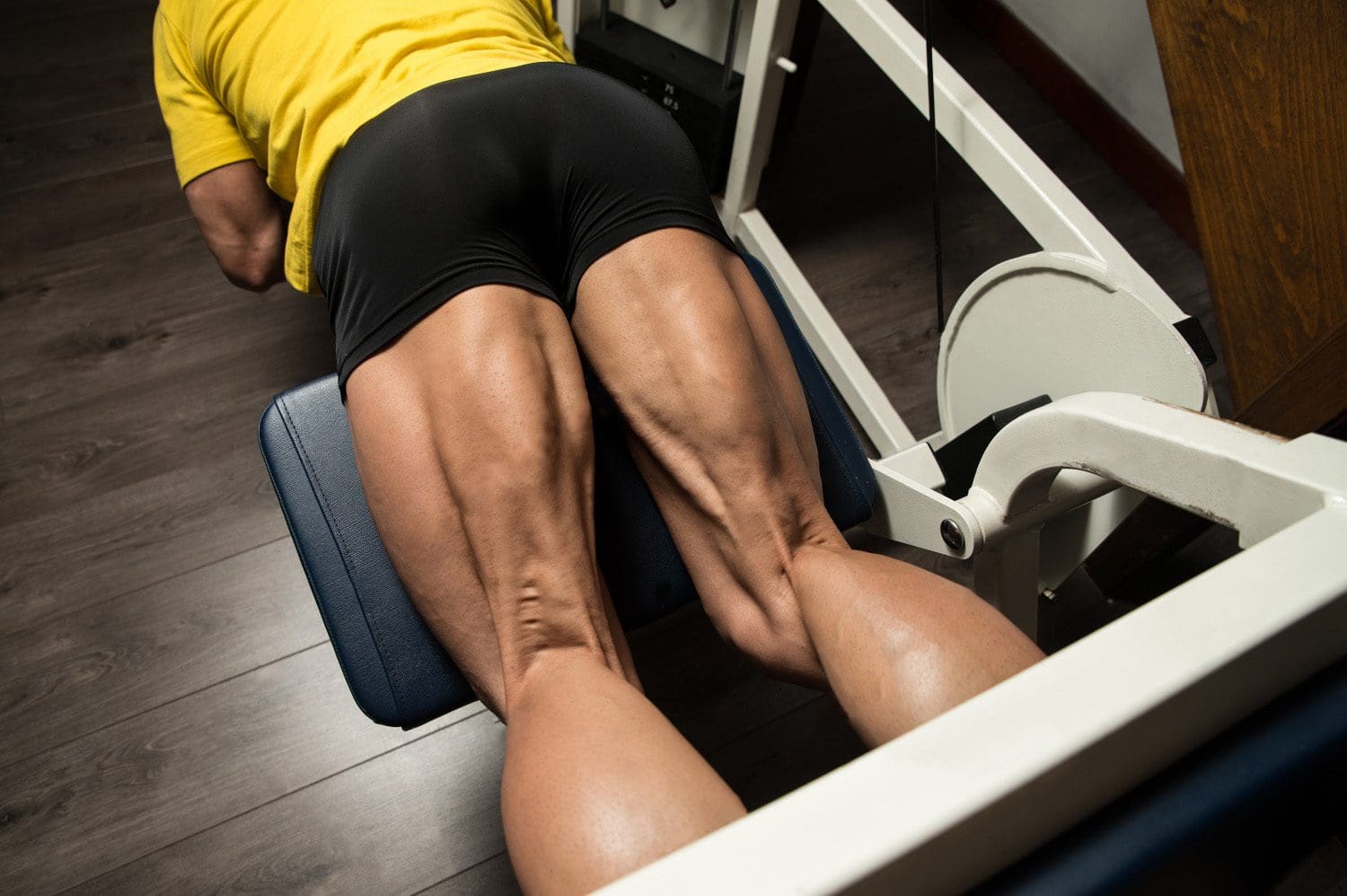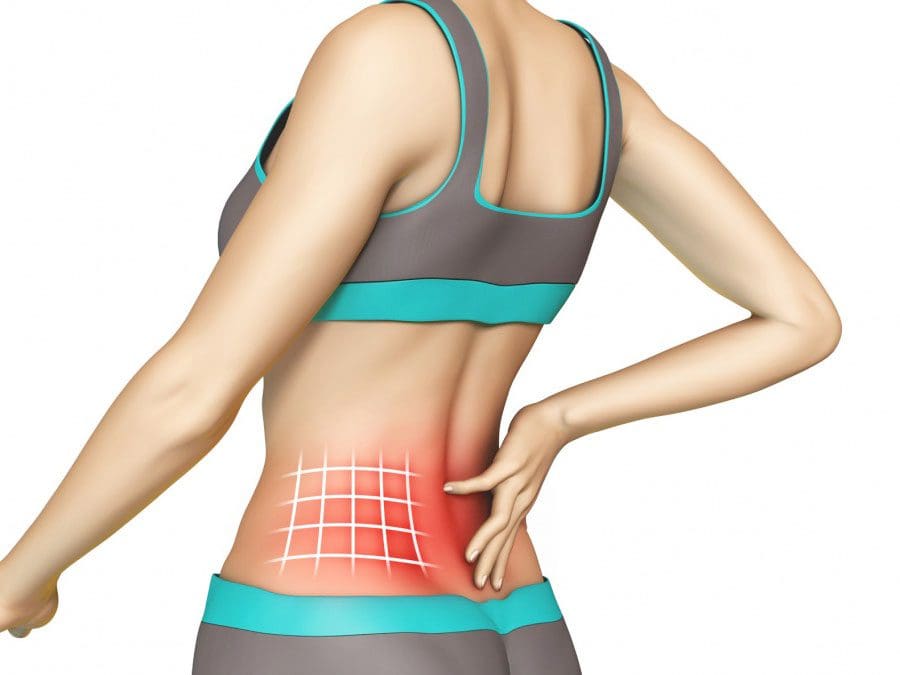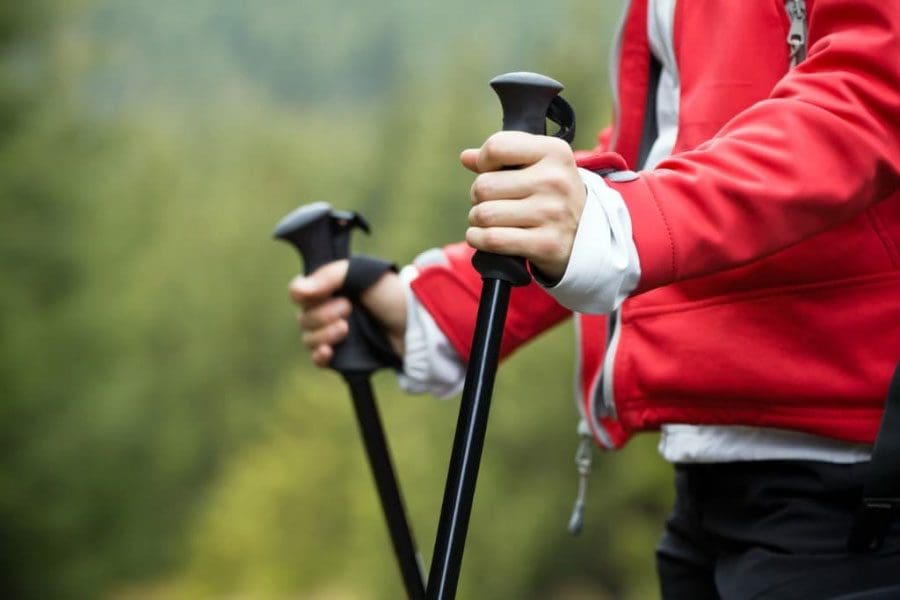Athletes
Sports Spine Specialist Chiropractic Team: Athletes strive to achieve their body’s maximum performance by participating in numerous training regimens consisting of strenuous exercises and physical activity and ensuring they meet all of their body’s nutritional requirements. Through proper fitness and nutrition, many individuals can condition themselves to excel in their specific sport. Our training programs are designed for athletes that look to gain a competitive edge in their sport.
We provide sport-specific services to help increase an athlete’s performance through mobility, strength, and endurance. Occasionally, however, the excess workouts can lead many to suffer injuries or develop underlying conditions. Dr. Alex Jimenez’s chronicle of articles for athletes displays in detail the many forms of complications affecting these professionals while focusing on the possible solutions and treatments to follow to achieve overall well-being.

Kids and Strength Training
Strength training: The Centers for Disease Control have estimated that around 16% of six to nineteen-year-olds in the US are overweight or obese. This comes from inactivity, no movement, exercise, and poor diet. On the other end, young athletes search for ways to gain an edge, often falling victim to steroids and all of the negative effects they have.
This is where strength training comes in. This could be an answer to getting kids off the couch, moving, and offers a healthy alternative to the young athletes looking for that competitive edge. Fitness experts, doctors, health coaches, and parents say absolutely.
Strength Training

Kids’ strength training is very different than strength training for adults. This exercise program focuses on:
- Controlled movements
- Proper technique
- Correct form
- Uses more repetitions
- Uses lighter weights.
This type of workout program can be done with:
- Free weights
- Weight machines
- Resistance bands
- A child’s own body weight
The focus for children in strength training is not to bulk up, as this is not weightlifting, powerlifting, or bodybuilding. Fitness experts agree that these types of training regimens are not healthy or safe for children. The goal is to:
- Build strength
- Improve muscle coordination
- Enhance long-term health
- Rehabilitate injuries
- Prevent injuries
Added benefits of strength training can help young athletes improve performance through increased endurance.

Training Guidelines
It is fundamental to find a program that is safe and successful for children. Parents want a program designed specifically for kids supervised by a fitness professional with child experience, and most of all, it is fun. For strength training, there is not a minimum age; however, the kids should understand and follow directions.
Before starting a child on any new fitness program, check with their doctor or healthcare provider.
A training program should include:
- A session should start with a 5-10 minute warm-up exercise/s like stretching and light aerobics.
- Every session should end with a cool-down combined with stretching and relaxation.
- Kids should not immediately be using weights until proper form and technique are learned.
- Kids should start with their own body weight, bands, or a bar with no weight.
- Using 6-8 different exercises that address all the muscle groups, begin with 8-15 repetitions.
- Each exercise should be done with a complete follow-through of the full range of motion.
- If the repetitions are too much with a specific weight, reduce the weight.
- Repetitions and sets should gradually increase over time to maintain the intensity of the training.
- Add more weight only when the child displays the proper form and can easily do at least 10 reps.
- Workouts should be 20 to 30 minutes long, 2 to 3 times per week, to get the most benefit.
- Make sure to rest a day between each workout day.

Safety
Strength training was not always considered an appropriate exercise for kids. Doctors and fitness professionals believed that it was unsafe for a child’s growing body because of the added pressure on growth plates or the cartilage that has not fully turned into solid bone. However, experts now know that kids can safely participate in a strength training program with proper technique and supervision.
As with any exercise/fitness regiment, safety measures need to be in place along with heightened supervision. Unfortunately, most injuries happen when kids are not supervised, not using proper techniques, or from trying to lift too much weight. Here are some safety precautions to remember:
- Learning new exercises should be done under the supervision of a trainer/instructor, making sure proper technique and form are used.
- Smooth, controlled motions should be the goal.
- Controlled breathing and not holding their breath needs to be taught
- Proper technique will help avoid injuries
- The kids’ progress should be monitored
- Have the children record the exercises they have done, how many reps, and the amount of weight/resistance.
- If enrolled in a strength training class, a good ratio is one instructor per 10 students. With this ratio, the kids can receive proper instruction and supervision.
- Kids should train in a hazard-free, well-lit, and properly ventilated facility.
- Make sure the kids drink plenty of water during and after the workout
- Fitness trainers/instructors will see to it that there are frequent rest and rehydration breaks
Keep in mind
In a strength training program for children, there should be no competitive drive. Instead, the focus should be on participation, learning the movements, and positive reinforcement. Set realistic goals and expectations for the child to understand that it will take time to learn these new skills.
Remember that kids do not increase muscle size until after puberty. Please make sure the kids enjoy the strength training sessions and that they are having fun. Keep in mind that kids can become easily bored. Therefore, use various exercises and routines, keeping them excited and wanting to learn and do more.
Healthy Habits
Getting kids interested in fitness early on can help establish a life-long habit of wanting to be and stay healthy. This includes a balanced diet, plenty of rest, and regular exercise. When done correctly, strength training can be a fun and highly beneficial activity.
PUSH Fitness

Can Jogging and Running Help With Back Pain?
Those who like to jog or run say there is nothing like the feeling of jogging and running. The breeze all around, the sound of feet hitting the pavement, and the accomplishment felt after. Jogging and running can generate empowerment that makes individuals feel like they’re on top of the world. Until back pain rears its ugly head.
Many individuals with back pain see no alternative and so give up trying to jog or run and just forget the whole thing. However, it is possible to be a successful runner and hold down a jogging/running regiment, even with back pain. �

�
Jogging and Running
Running can be highly beneficial for those with back pain. Aerobic exercise is considered a form of effective treatment for low back pain. Other studies have found that runners have stronger spines. An article published in Scientific Reports looked at the intervertebral�discs in joggers/runners, as well as, non-joggers/runners. The joggers/runners had healthier intervertebral�discs.
Running can be quite helpful to those having trouble with mechanical back pain. Mechanical means an individual has a structurally sound spine but has a job/ that creates force/s that can damage tissues, which results in back pain. Often, those with back problems have a weak:
- Core
- Front
- Back

� Jogging and running can help strengthen the core along with weight loss and improved fitness will definitely benefit the spine/back. Jogging and running increases endorphins. This is great for the brain and mood and decreases overall general pain.
�
Individuals that should not be jogging or running
It does not mean these individuals cannot jog or run. But because of underlying conditions, they need to talk to their doctor first and may have to take extra precautions.
Back pain can be mechanical or structural. If the spine has a structural problem, then jogging or running might not be the best option for a therapeutic exercise regiment/program. This can be dangerous as any added stress placed on an abnormal spine could worsen symptoms, instead of helping to reduce back pain. It could even worsen the condition. This is where the proper spine treatment is directed by a doctor, spine specialist, chiropractor, or physical therapist.

� If the back pain is mechanical, there are ways to work in a running program while keeping the back safe. Usually, this means stretching out, getting physical therapy, and applying heat, and ice. These can all help while being able to jog and run.
Lace-up, make sure there is plenty of water and hit the neighborhood, trail, pathway, etc. However, running with back pain is not the most optimal way to jog or run. Here are some ways to get the full benefits from the experience.
�
Stretching Out
Stretching is highly beneficial not only to runners, but everyone, especially those with back pain, which is why stretching before and after jogging and running is extremely important.
The hamstrings, quadriceps, groin, and calf muscles definitely need to be stretched out. These are the legs muscles and need to be loose and ready to move. The thigh muscles are all directly connected to the pelvis and hip. If they are not properly stretched it can affect pelvic tilt and generate low back tightness.
The calf muscles are not directly connected, but the body is a kinetic chain, which means that the body works as a whole unit. For example, let’s say an individual has a tight calf or Achilles tendon. This can change stride length, which can then affect the hamstrings, hips, and back. Icing the back after a jog or run will reduce back pain and inflammation. �

�
Ease Into The Routine
Experienced runners know all too well that literally hitting the ground and taking off results in pain and injuries. First-time joggers/runners, as well as those coming back to jogging or running need to take it low and slow. This means to gradually ease into a jogging/running routine rather than trying for ten miles right away.
Go for reasonable goals that can be accomplished. This will increase the likelihood to stay with it and continue. This goes for new runners or joggers/runners making a return. Gradually increasing distance and speed is the safest approach. Gradual increases in the jog or run allow for positive and progressive gains.
�
Mix In Other Workouts
Cross-fit training can help the body take a break when carrying out a running program. Cross-fit training involves:
- Swimming
- Biking
- Weights
A comprehensive exercise program should include resistance training and cardiovascular exercises. Only want to stick to only running and nothing else then change distances and speeds on a regular basis. Changing running workouts frequently will help to avoid overuse injuries.
Overuse injuries can stop an exercise routine cold. Therefore, making sure that the body gets the proper amount rest between jogs, runs, and workouts is crucial for the therapy to work, to eventually alleviate back pain. �

Proper Equipment
Throwing on a pair of old sneakers and jogging out the door is not the way to go. Improper shoes could exacerbate the back pain/condition and even create new injury/s. Therefore choosing the proper jogging and running equipment will prevent injuries and back pain.
Shoes, braces, and orthotics do make a difference. Just like using the right tool for a job makes a difference. Especially, when using a cheap knock-off that breaks or falls apart. It is the same with exercise equipment/gear. For the low back, a neoprene belt can help the low back remain loose by providing heat and spine support.
Shoes and orthotics are important, but be sure to know foot size and type. Otherwise, they could worsen back pain or cause another injury. Effectively utilizing them, a runner should get a custom foot orthotic/s sizing. Because every person is unique, functional custom foot orthotics can help balance a person�s unique body structure. Dr. Jimenez can help provide functional custom foot orthotics to patients who want to improve back pain. For example, some things to consider:
- Flat-footed pronator
- High-arched supinator
- Raised heel
- Flat heel
- Ultralight shoes
- Minimal support
- Maximum support
Some choices depend on the constant surface the runner is on, like cement, pavement, trail, or dirt road. Specialty running shoe stores can provide a foot strike analysis to find the shoes that are best matched for your physical needs. �

�
Feel That, Your Body’s Telling You Something
Experienced athletes, especially runners know how to listen to their bodies. If an injury is acting up they take the necessary time off to heal properly before re-starting the regiment. For those with back pain, this is especially important during the program.
If back pain presents mid-run, it is recommended to slow down. If that doesn�t bring relief then stop and stretch. And if that does not help then stop the workout altogether. It could be nothing and all that is needed is more rest before starting up again. But if it persists then check with your doctor, chiropractor, or physical therapist to re-evaluate the program, as there could be some changes/adjustments that need addressing.
It does not matter, whether it is back pain, shin splints, or plantar fasciitis, the point is to listen to your body. Pain that lingers on or wakes you out of sleep should be checked out.
Chiropractors On Metabolic Syndrome & Inflammation
�
Dr. Alex Jimenez�s Blog Post Disclaimer
The scope of our information is limited to chiropractic, musculoskeletal, physical medicines, wellness, and sensitive health issues and/or functional medicine articles, topics, and discussions. We use functional health & wellness protocols to treat and support care for injuries or disorders of the musculoskeletal system. Our posts, topics, subjects, and insights cover clinical matters, issues, and topics that relate and support directly or indirectly our clinical scope of practice.*
Our office has made a reasonable attempt to provide supportive citations and has identified the relevant research study or studies supporting our posts. We also make copies of supporting research studies available to the board and or the public upon request. We understand that we cover matters that require an additional explanation as to how it may assist in a particular care plan or treatment protocol; therefore, to further discuss the subject matter above, please feel free to ask Dr. Alex Jimenez or contact us at�915-850-0900. The provider(s) Licensed in Texas& New Mexico

Hike With/Without Back Pain
Being able to hike with back pain is a blessing for individuals that love being outdoors. Enjoying nature and being able to get away from all the stress and tension is something we all can use. Hiking is an excellent physical activity that cleanses the mind, body, and spirit. Not to mention the great exercise benefits that come with it.
The time spent going up and down hills following trails, etc. can feel unbelievable until pain symptoms start to present. Those with back pain know and understand that there are certain activities that can kick in the pain. If hiking has been stopped in its tracks because of back pain, or, if just about to start hiking for the first time, here is some advice to reduce and alleviate back pain during and after a hiking session. �

�
Hike The Right Way
Dr. Alex Jimenez D.C. is a spine injury specialist at Injury Medical Chiropractic Clinic. He believes at its core, hiking is very beneficial to individuals with back pain.
Hiking is a great activity for those with back pain because it increases muscular circulation improving soft tissue flexibility in the spine along with other muscle groups. Hiking helps strengthen spinal support muscles, improves flexibility and posture. The result is minimized pain on all levels. Walking on different uneven terrain/s contributes to improved balance and synergistic muscle activity of the back, legs, and core, and the small muscles of the feet. However, there is an incorrect way to hike with back pain.
If done incorrectly hiking can have a negative detrimental impact on the body. Proper technique and form need to be followed. For example, a backpack that is improperly worn or not correctly sized for the body type could lead to imbalance. This could lead to improper form and injuries. Poor posture during a hike places added pressure on the:
- Joints
- Spine
- Ligaments
- Tendons
This could easily result in muscle/tendon injuries. With some preparation, a few tips and being aware of your surroundings will help you to become a hiking pro in no time, with reduced, improved, and possibly no back pain after a while of doing this great activity. Here are some words of wisdom when it comes to hiking and back pain.

Proper Backpack
A poor-fitting backpack will easily lead to increased back pain and even other ailments like shoulder and neck pain issues. A proper backpack should have the straps around the waist and across the back to evenly distribute the weight. Visit a sports/outdoor store to get correctly fitted for a backpack.
�
Stretching Out
Getting and staying loose before and after a hike is very important. Before a hike improves circulation and loosens the muscles, in turn, reducing the stress on the joints. Stretching after a hike reduces muscle fatigue and soreness that can amplify and exacerbate back pain along with any other body soreness.

�
Trekking Poles
Using trekking poles can be beneficial and quite helpful for individuals with back pain. Trekking poles can help avoid poor posture by keeping the body in an upright position. This helps reduce back pain experienced during and after a hike. �

�
Body Care
Hiking successfully means that the body needs to be fully functional and fueled before even stepping on the trail. Fueling the body with nutritious snacks like bananas, dried fruit, and trail mix will keep the body’s energy supply going. And above all stay hydrated with plenty of water. Also, focus the workout on developing upper body and core strength to prevent injury.
Don’t forget to listen to what your body is telling you. Individuals with back pain need to listen to their bodies making sure not to overdo it, as well as, with any type of exercise, to adjust to your specific pain tolerance level. If unable to limit distance or time, then make sure to take frequent breaks. This will help avoid placing unnecessary strain on the spine. �

Recovery Time
The body needs a proper amount of time between hikes to recover properly. If there is still soreness and pain, WAIT until the body is no longer sore before trekking to the next trail. The amount a person can hike depends on the individual, overall strength, and how fast their body recovers between hikes. It is different for everyone.
�
Assistance
As the journey commences, whether going for pain-free or less painful hiking, remember that it’s ok to have others help get you there. Getting help from a veteran hiker will definitely benefit proper form and posture. Hiking with an experienced partner can also help avoid poor hiking techniques that can worsen back pain or even create new injuries. �

Consult a local chiropractor, or spine, and pain specialist if you are unsure about hiking and are experiencing ongoing back pain. They will help develop a customized/personalized treatment plan with the focus on decreasing and controlling the pain and improving the body’s overall function to be able to participate in physical recreational activities.
�
Auto Accident Specialists & Chiropractic

Seven Exercise Tips to Help Get Back Into Shape
Seven: Working in the yard, and wherever else the sun beats down relentlessly will be a test as to the type of shape your body is in. Poor eating habits have increased fat deposits, as well as sitting around. Never fear, it is recommended that you try out these seven exercise tuneup tips to get back in shape as summer begins.
Seven
Drink proper amount of water regularly
Water helps immensely in generating fat-loss. 64 ounces a day is the absolute minimum. Twice that amount, or one-gallon, is the way to go, making sure the water is ice cold. Ice water is about 40-degrees Fahrenheit. This means the body’s system has to heat the water to a core body temperature of 98.6 degrees.
The process requires about one calorie to warm one ounce of cold water to body temperature. Therefore an 8-ounce bottle of ice water burns seven calories. Try that with 16 glasses, which equals 128 ounces, or one gallon. This generates 123 calories of heat energy. �

�
Eat small meals more often
Fat-loss study subjects were given six meals to consume a day, with no meal having more than 400 calories. The study emerged successfully. It is important to allow no longer than three hours between eating. This could be snacks, light meals, salads, etc.
Eating with this type of pattern keeps the body on an even keel. And since the individual is never overly-full/stuffed and never over-hungry/famished this seems to be ideal for losing weight and getting rid of fat cells. �

When eating takeout Assert Yourself
All the help you can get to avoid gorging on rich, high-caloric, restaurant foods. Here are some tips:
- Don’t go through the whole menu
- Choose a simple green salad without the garnish
- Lemon juice, vinegar, or low-calorie dressing is the way to go instead of the creamy and oily dressings.
- Select one or two vegetables with nothing
- A plain baked potato is a great choice
- Other positive choices are broccoli, carrots, and cauliflower
- Find out what kind of fish is available
- Try the fish baked, steamed, or broiled, with nothing on top
- Decaffeinated coffee or tea as a dessert, with some fresh fruit
�
Get an exercise routine that you will stick to
Be careful if it’s swimming or some type of water-based exercise. Swimming does offer benefits, but the thermal effect of being in the water can cause you to eat more from all of the energy loss. Strength training is the way to go, so you can lose weight and then get into the water exercises. More than any other exercise or activity strength training promotes a double-reducing advantage. �

Do not Over-Exercise
Overdoing it with the exercise can tear down body tissue/s, increasing the risk of injuries, which then puts you in downtime and less active.
�
Too much Television Time
Decrease the exposure to television because of the convenient foods that are offered. This diminishes the temptation to overeat. Get involved in a household project, along with the extended daylight hours, can help this situation.
�
Take advice
When you are tough on yourself, life can become a beautiful thing, as you witness the benefits from the hard work. We don’t pay the price for good health, we just enjoy it along with the benefits. However, we do pay the price for bad/poor health. �

Exercise Facts
- More than half of adults do not get the recommended amount of exercise.
- Try for at least 20 minutes of exercise a day.
- Around 25% of adults don’t exercise at all
- Keep the exercise routine fresh by mix it up doing different activities like alternate power walking, yoga, bicycling, tennis, band workouts, etc.
- Regular exercise helps maintain healthy bones and helps keep the muscles and joints strong.
- Incorporate fitness into a daily routine to help control weight and boosts mood and sense of well-being.
- Strengthening the abdominal muscles/core can prevent back pain
- Exercise helps ease anxiety and depression symptoms that often accompany various spine conditions, like chronic back pain.
- Individuals will stick with an exercise program so long as they enjoy the activities/exercises
- With a chronic condition like rheumatoid arthritis, most benefit from regular exercise but talk to a doctor before beginning any exercise program.
The Functional Fitness Fellas
Health & Immunity Series 1of 4 | El Paso, Tx (2020)
If you have enjoyed this video and/or we have helped you in any way
please feel free to subscribe and share us.
Thank You & God Bless.
Dr. Alex Jimenez RN, DC, MSACP, CCST
Subscribe: http://bit.ly/drjyt
Facebook Clinical Page: https://www.facebook.com/dralexjimenez/
Facebook Sports Page: https://www.facebook.com/pushasrx/
Facebook Injuries Page: https://www.facebook.com/elpasochiropractor/
Facebook Neuropathy Page: https://www.facebook.com/ElPasoNeuropathyCenter/
Facebook Fitness Center Page: https://www.facebook.com/PUSHftinessathletictraining/
Yelp: El Paso Rehabilitation Center: http://goo.gl/pwY2n2
Yelp: El Paso Clinical Center: Treatment: https://goo.gl/r2QPuZ
Clinical Testimonies: https://www.dralexjimenez.com/category/testimonies/
Information:
Clinical Site: https://www.dralexjimenez.com
Injury Site: https://personalinjurydoctorgroup.com
Sports Injury Site: https://chiropracticscientist.com
Back Injury Site: https://elpasobackclinic.com
Rehabilitation Center: https://www.pushasrx.com
Functional Medicine: https://wellnessdoctorrx.com
Fitness & Nutrition: http://www.push4fitness.com/team/
Twitter: https://twitter.com/dralexjimenez
Twitter: https://twitter.com/crossfitdoctor
The Functional Fitness Fellas | What is it? & Who Are They?
If you have enjoyed this video and/or we have helped you in any way
please feel free to subscribe and share us.
Thank You & God Bless.
Dr. Alex Jimenez RN, DC, MSACP, CCST
Subscribe: http://bit.ly/drjyt
Facebook Clinical Page: https://www.facebook.com/dralexjimenez/
Facebook Sports Page: https://www.facebook.com/pushasrx/
Facebook Injuries Page: https://www.facebook.com/elpasochiropractor/
Facebook Neuropathy Page: https://www.facebook.com/ElPasoNeuropathyCenter/
Facebook Fitness Center Page: https://www.facebook.com/PUSHftinessathletictraining/
Yelp: El Paso Rehabilitation Center: http://goo.gl/pwY2n2
Yelp: El Paso Clinical Center: Treatment: https://goo.gl/r2QPuZ
Clinical Testimonies: https://www.dralexjimenez.com/category/testimonies/
Information:
Clinical Site: https://www.dralexjimenez.com
Injury Site: https://personalinjurydoctorgroup.com
Sports Injury Site: https://chiropracticscientist.com
Back Injury Site: https://elpasobackclinic.com
Rehabilitation Center: https://www.pushasrx.com
Functional Medicine: https://wellnessdoctorrx.com
Fitness & Nutrition: http://www.push4fitness.com/team/
Twitter: https://twitter.com/dralexjimenez
Twitter: https://twitter.com/crossfitdoctor







